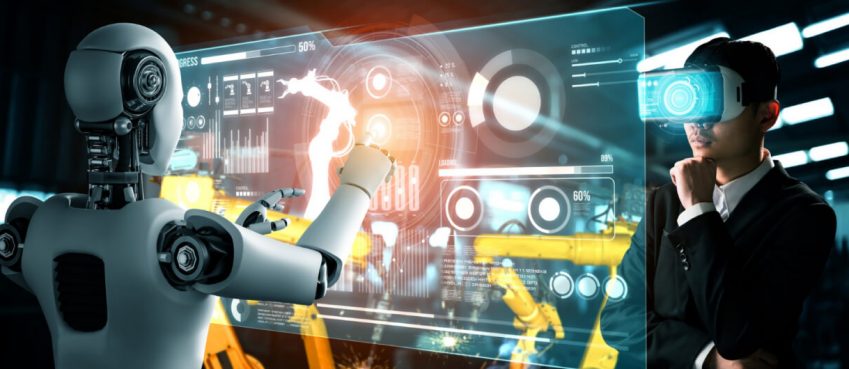
Virtual Reality allows businesses to demonstrate their products online or through a VR headset. Two major types of VR content are 360-degree videos and 3D animations.
VR marketing allows companies to bridge the gap between experience and action. You can use VR to offer a digital experience in place of a physical one, which can promote products and services. With virtual reality, you can immerse users in the world created by your brand with your product showcased most advantageously.
Now, more than ever, marketing is being driven by the wants and needs of the customer. As new technology becomes available, customers want brands to deliver experiences that use it.
This means it is important that marketers keep pace with new advances in order to meet customer expectations and deliver the best possible experiences. This technology has already been adopted by several sectors, so failing to utilize it could leave you lagging behind your competition.
Uses of Virtual Reality
Travel Industry
Travel companies are using VR to show visitors hotels and enable them to experience tours of other countries. A VR video gives users the opportunity to embark on an immersive journey through the hotel’s rooms, explore its facilities, take a walk around the resort, and even make a direct booking.
A study for the Omni Hotels chain showed that people who experienced a VR tour were 67% better inclined to book a room in the hotel.The same study also demonstrated a 16% increase in the overall number of bookings when virtual reality was used.
Also read: Home Theatre Power Manager: Should You Buy It? (Complete Review) + 5 Best Home Theatre Power Conditioners To Buy
House Building
House builders were early adopters of 360-degree tours to show visitors around show homes. VR is a great way to show houses that are not yet built. Estate agents are now also offering virtual tours of houses they are selling.
Allowing visitors to ‘walk’ around a house virtually before they visit physically encourages better qualified viewings as visitors can discard houses that are not for them before arranging a viewing, saving everyone time.
Retail
In an effort not to lose the market to e-commerce, the retail sector does not take long to adopt the advanced technologies to market their products and services.
Retailers in the home furnishings, furniture, cars, and clothes have been experimenting with the VR technology for some time offering virtual placements, VR test drives, and VR try-ons. IKEA offers the ability to ‘place’ furniture in a room to see what it will look like. You can also virtually install their kitchens to experience how they will look.
Volvo allowed members of the public to test drive their XC90 SUV. It puts you in the cockpit and takes you on an idyllic ride through the country. This is a great move by Volvo – a company that has struggled perhaps to appear modern and relevant compared to their competitors. By adopting VR in this way they’ve made the public look at their brand in a new light.
Samsung, in conjunction with NASA, has created an immersive 4D VR experience which allows users to virtually walk on the moon. Users step into a flight suit and harness whilst wearing a Gear VR headset. They then immerse themselves in a visual and physical experience that recreates a moon mission.
Also read: [10 New] Best OnionPlay Alternatives To Stream TV Shows And Movies
Fast Moving Consumer Goods
Oreo created a VR marketing campaign to launch it’s Filled Cupcakeflavor Oreos. After being transported through a life size Oreo cookie portal, you move into a magical land filled with milk rivers and Oreos.
Exhibition Industry
With all live events cancelled due to the pandemic, the exhibition industry has rapidly embraced VR technology. Live events have been replaced by virtual events with visitors able to tour the exhibition hall and stop at virtual stands.
However, with the end of lock-down, live events are certain to make a comeback, Alan Jenkins of exhibition stand designer Black Robin Exhibits said “While virtual events have their uses, they don’t replace the benefits reaped by attending a live trade show, you can’t network and really the best way to market a company online is through a website, not a virtual trade show stand”.
Benefits of VR Marketing
- VR offers an enhanced user experience – VR can allow users to experience a place virtually which might encourage them to then experience it physically. Customers can ‘try before they buy’.
- Stay one step ahead of your competitors – VR and 360-degree tours are being adopted more and more widely, utilizing it will demonstrate that you are an advanced, technology-oriented company.
- It generates higher user engagement and brand recognition – Studies show that, in general, consumers are better inclined to buy from a brand that uses VR than from others. Consumers feel an emotional impact after experiencing VR content and become more open to the brand.
- You can use a unique VR experience to generate media coverage which may in turn lead to increased sales.
How to develop a VR marketing strategy
360-degree videos
This is the cheaper option for VR content, though it does not mean it is bad or inferior. A 360-degree video is a perfect way to create immersive experiences from any event or location in the world. It requires certain equipment, though. To start with, you need a spherical camera with 360-degree lens and tripods (plus Steadicams). Using a drone is also a viable option.
For post-production, you will need special editing software, Videostitch for example, to bring all the footage in one piece and ensure high quality of visuals.
Web Design companies like Koreti offer to make 360-degree tours as an add-on to their web design services. This will be cheaper and easier than buying all the equipment yourself.
3D Animations
There are plenty of tools and platforms to create simple virtual 3D environments, such as Maya, Structure Sensor, 3dsMax, LightWave, Modo, Cinema 4D, Houdini, etc.
If you want to produce something bigger and more complex, like 3D VR games, you can use game engines like Unity or Unreal, and you would also need Google VR SDK, a VR headset and an Android phone. With the Unity engine, you can also build 3D models, animations and interior designs.
Also read: 2021’s Top 10 Business Process Management Software
The Future
Virtual reality, creating experiences that no other software product is capable of, gives the users an absolutely unparalleled experience of a product leaving long-term memories.
Brands integrating VR in their marketing campaign will benefit from this effect that will immediately make them stand out from among the competition.
We cannot say that virtual reality in marketing is still in its infancy, as there are already lots of examples of successful use of VR in promotional campaigns. We may be safe to say that it is in its childhood period with the wide adoption and new formats just around the corner.
Soon, we may see VR replacing the traditional forms of advertising with consumers tending to try and test new products or services in virtual space before getting their real-life counterparts.
Top 10 News
-
01
[10 BEST] AI Influencer Generator Apps Trending Right Now
Monday March 17, 2025
-
02
The 10 Best Companies Providing Electric Fencing For Busines...
Tuesday March 11, 2025
-
03
Top 10 Social Security Fairness Act Benefits In 2025
Wednesday March 5, 2025
-
04
Top 10 AI Infrastructure Companies In The World
Tuesday February 11, 2025
-
05
What Are Top 10 Blood Thinners To Minimize Heart Disease?
Wednesday January 22, 2025
-
06
10 Top-Rated AI Hugging Video Generator (Turn Images Into Ki...
Monday December 23, 2024
-
07
10 Top-Rated Face Swap AI Tools (Swap Photo & Video Ins...
Friday December 20, 2024
-
08
10 Exciting iPhone 16 Features You Can Try Right Now
Tuesday November 19, 2024
-
09
10 Best Anatomy Apps For Physiologist Beginners
Tuesday November 12, 2024
-
10
Top 10 Websites And Apps Like Thumbtack
Tuesday November 5, 2024







